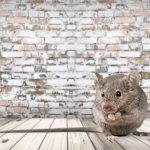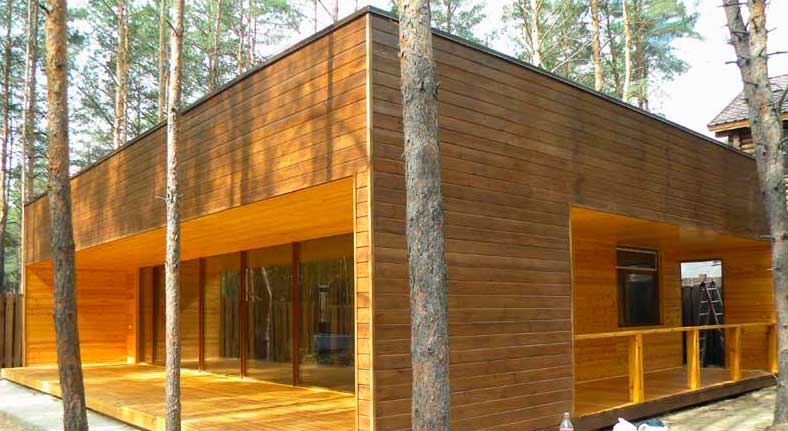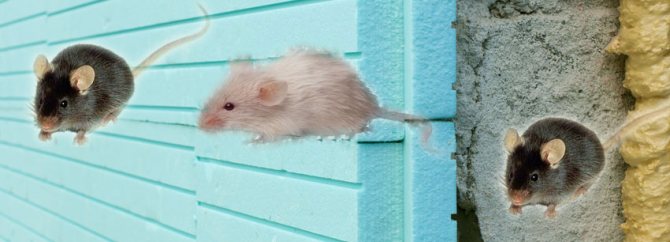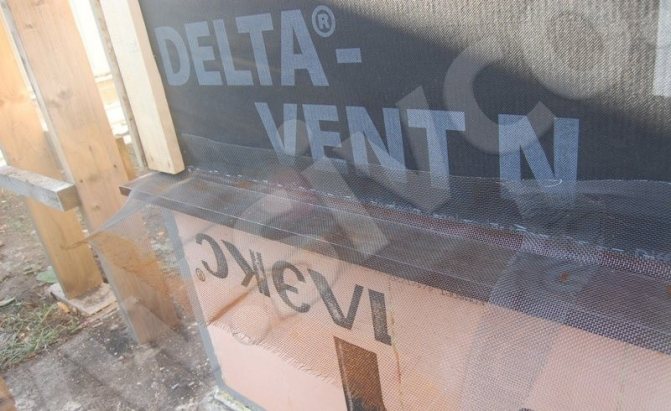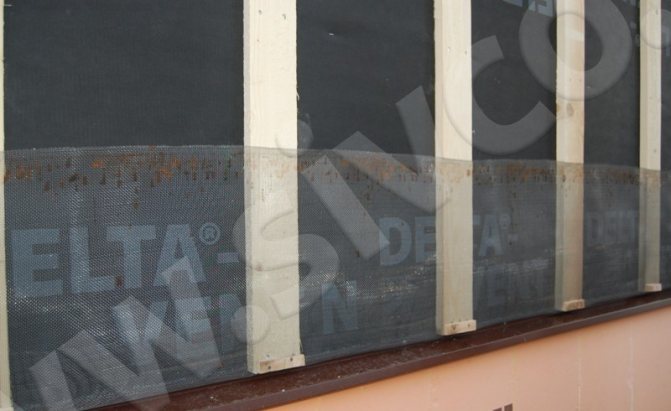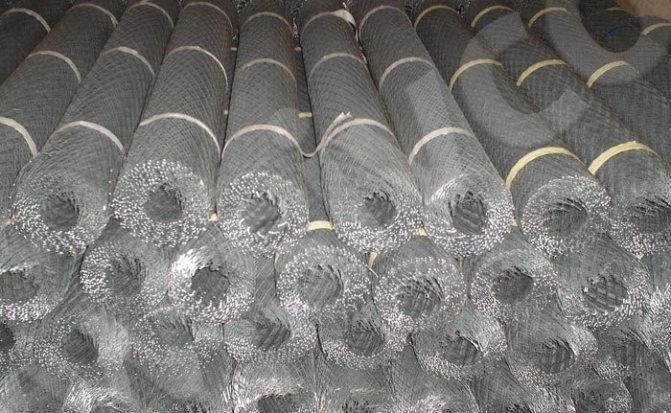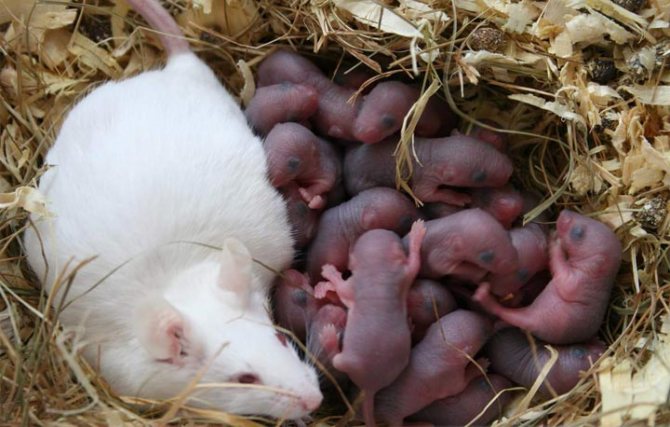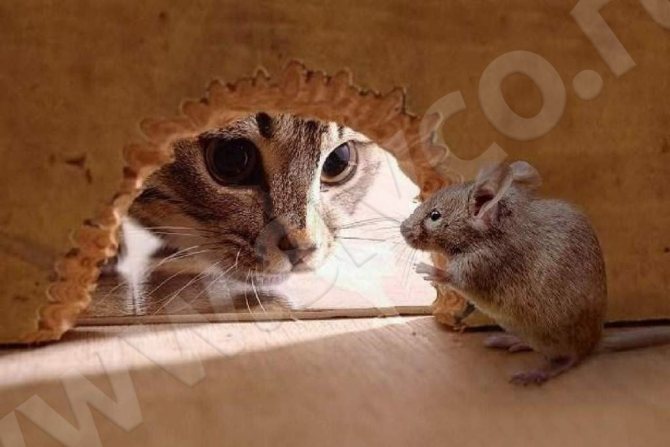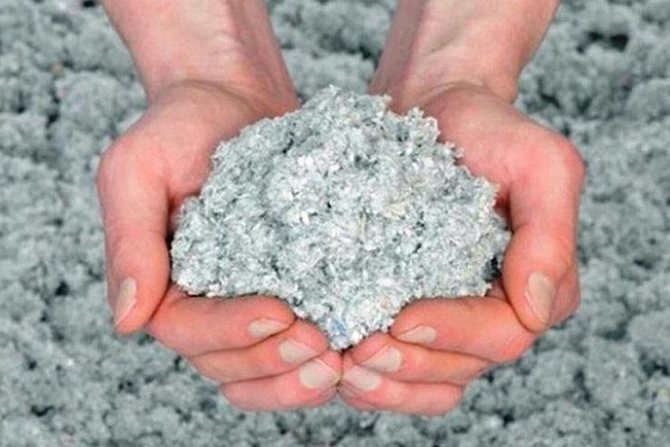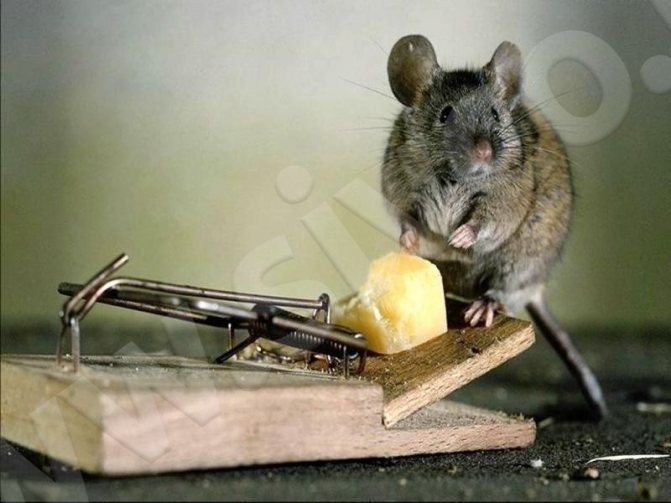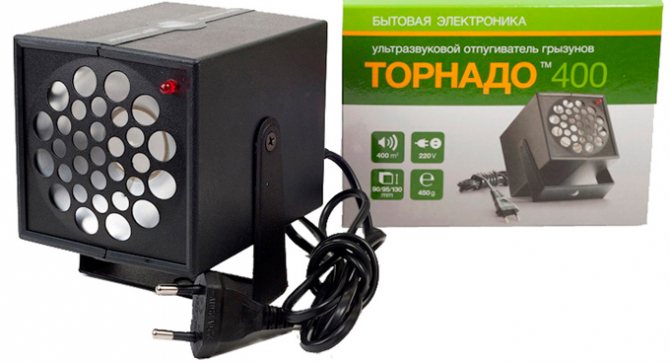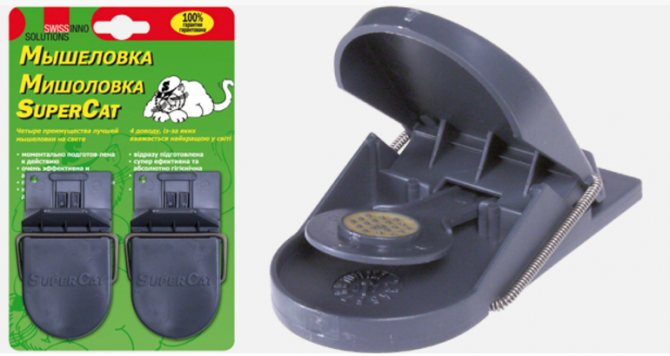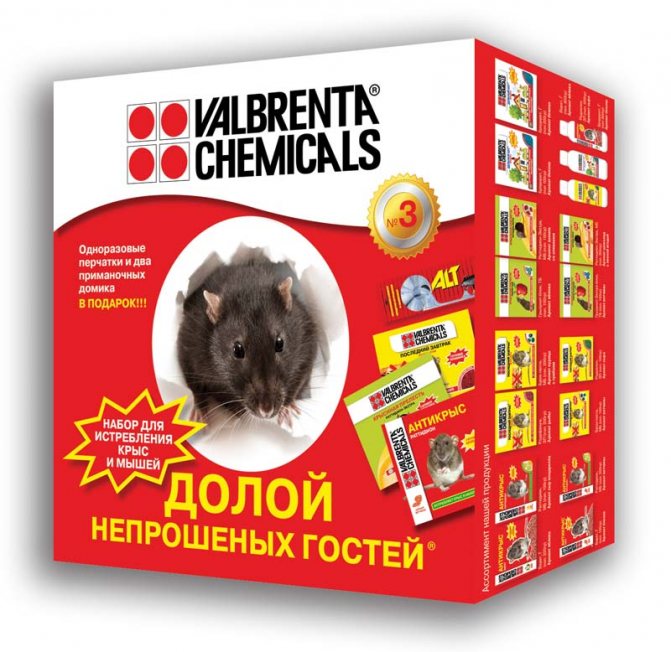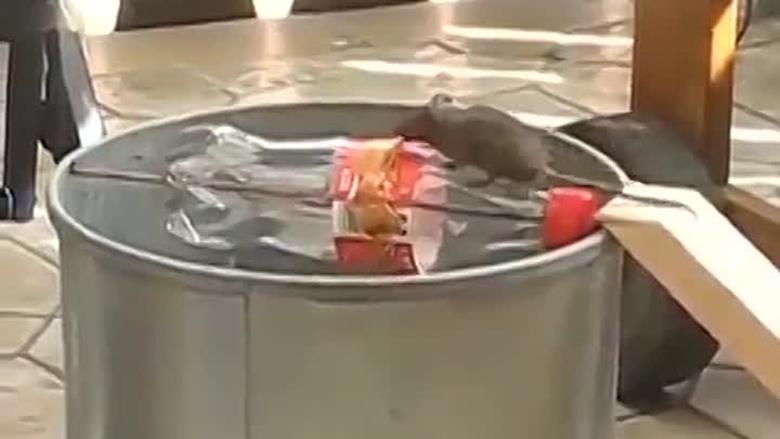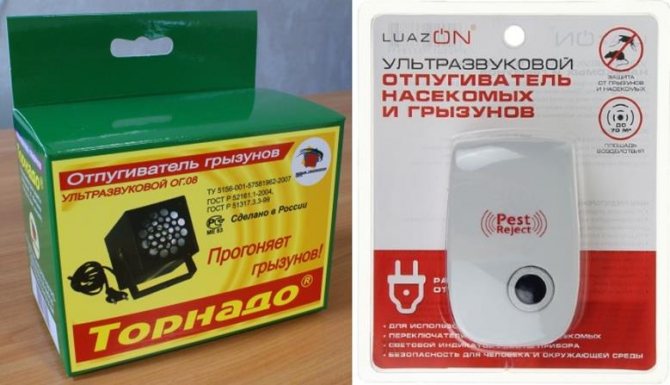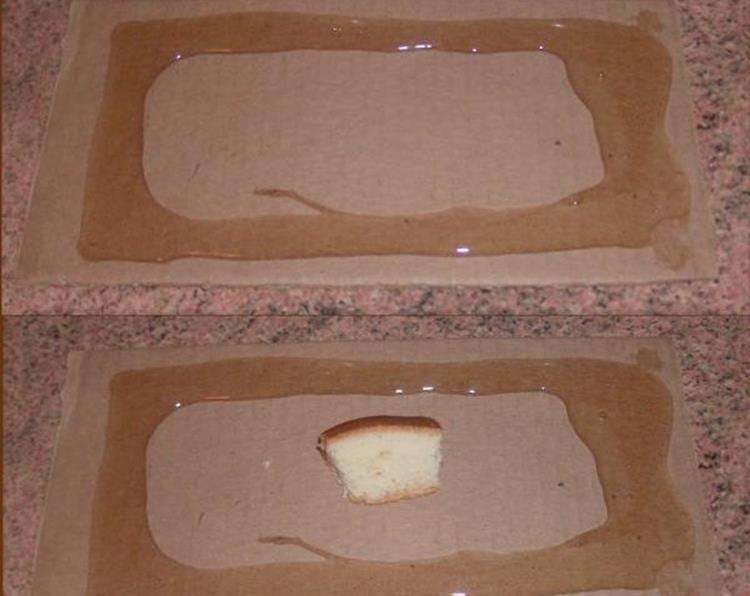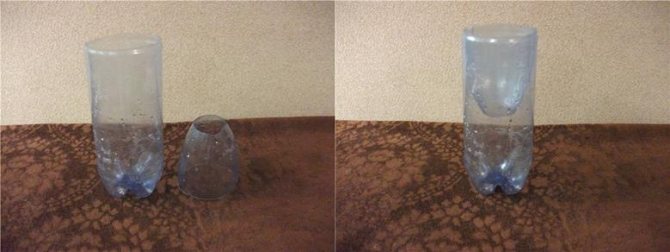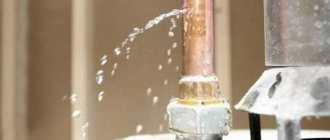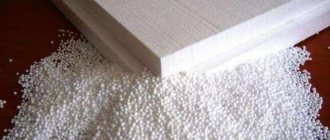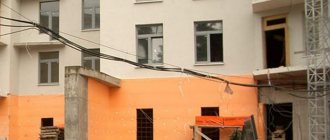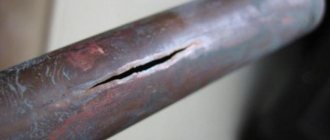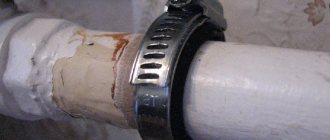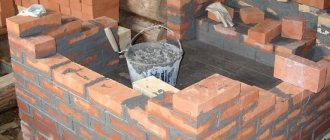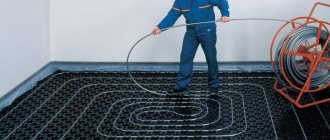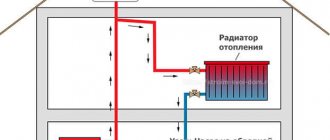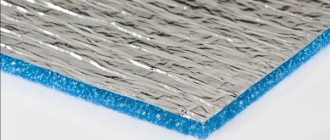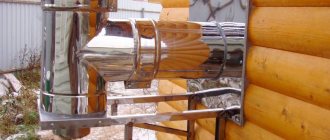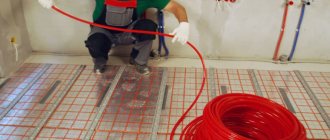Attracted by human activity, mice, rats and other species can relocate to a construction site and become a real scourge for both builders and future home owners.
Effective means of combating rodents are always used in the construction of cottages, houses and residences - they are laid at the design stage, being an integral part of the structure. When creating an individual house project, InnovaStroy specialists take into account the possibility of rodents entering different parts of the building, use mechanical means to secure the building structure, finishing materials, and prevent the formation of foci and voids that can be used by rodents as housing. The main techniques include the use of a variety of materials laid on the surface of the foundation, basement and home - made of metal, polymers or refined organics that are not attractive to rats and mice.
Advantages of frame houses
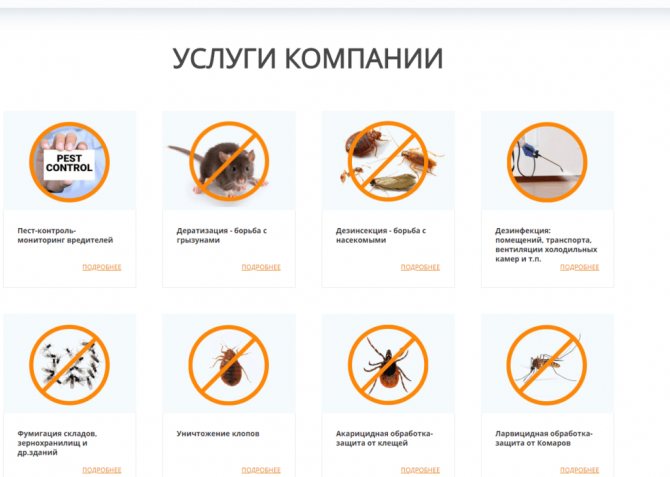
This technology has many advantages. First of all, it is low cost and high speed of construction. Another feature of the frame house is the minimum shrinkage value. Such a house, in contrast to a heavy brick structure, cannot be damaged from structural errors and uneven shrinkage made during the construction process or from the characteristics of the soil. Construction does not require a massive concrete foundation - special foundation slabs, screw or bored piles are used. Special processing of piles not only simplifies the structure and increases its service life, but also makes possible subsequent repair of the piles. Thanks to these features, it is possible to quickly commission a turnkey house in a complete set.
The durability of the frame structure of the house is quite high. In such a house, all internal systems can fully function for 30 years without the need for repairs. After this period, it is recommended to carry out a planned overhaul of communications. But the supporting frame of such a house with proper maintenance will last up to 90 years.
Disadvantages of frame houses
Naturally, there are also drawbacks in frame-type structures. Even at the design stage, it is necessary to take a responsible approach to the selection of the materials used. So, an attempt to save money can lead to the use of low-quality Chinese materials, for example, OSB-3 boards. In the manufacture of such plates, phenol-formaldehyde resins act as a binder. If the emission class of formaldehyde is from E2 or more, then this substance will actively evaporate into the air of the room, which poses a danger to human health. Materials with a zero emission class are considered safe.
Short-fiber mineral wool and low quality basalt wool are a source of carcinogenic dust. Thus, the correct selection of materials used in construction will guarantee a high-quality and healthy life for people living in a frame house.
In addition, timber frame houses are classified as timber. This indicates an increased fire hazard. This drawback can be eliminated by using fire-resistant materials: special drywall, fireproof panels from LSU, DSP. The beams from which the frame is made must be impregnated with fire-resistant impregnations. Expanded polystyrene is selected class G1 or G2. The disadvantages include the low vandal resistance of such houses. The walls of a frame house can be destroyed by one person using a chainsaw, which cannot be done with stone walls.In addition, the materials of the frame and other structural elements are defenseless against the attack of small pests - mice, rats. This seemingly insignificant fact can make a person's life in the house absolutely unbearable. Rodents gnaw holes and tunnels in the insulation material, destroy expanded clay and glass wool, and can live in the walls of a frame house for a long time. This problem is especially relevant when low-quality foam was used as insulation during the construction of the house.
What kind of insulation is not gnawed by rats and mice?
The greatest economic damage mice and rats cause insulation in house structures. Mice do not eat insulation, but gnaw, crush, tear and pull the insulation out to lay passages and nesting in it. Moreover, mice and rats gnaw almost all types of fiber and polymer insulation and even low-density heat-insulating cellular concrete (D100-D200) [2,3,4].
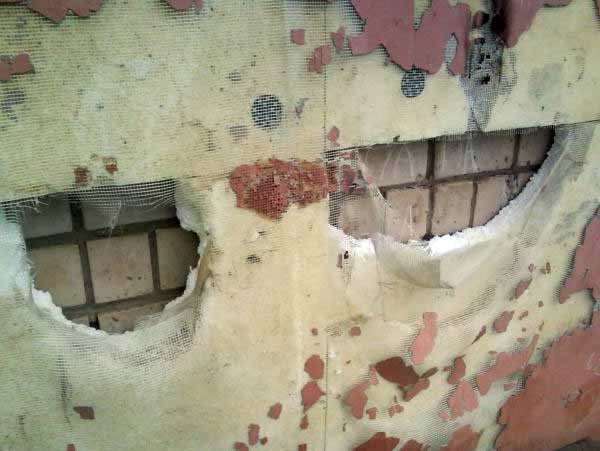

In 1992, at the Department of Forestry, Fish Culture and Wildlife at the University of Nebraska (St.
Lincoln, USA), a long-term experiment was carried out to study the amount of damage caused by mice to heaters in house structures [1]. For the study, test wooden frames were made from a board filled with various types of insulation: EPPS (extruded polystyrene foam), glass wool, basalt wool, vermiculite and cellulose insulation (ecowool). The inside of the walls was covered with 6mm plywood and the outside was covered with metal siding (corrugated steel sheet).
Before the start of the experiment, the thermal conductivity of each insulated panel was measured. Then 20 mouse families were settled in rooms with frame panels. The experiment with mice and insulation lasted 6 months, after which the thermal conductivity of each insulated panel was measured again, and then all panels were disassembled for study.
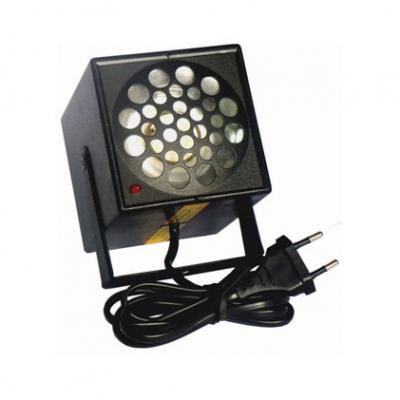

As a result of the experiment, it turned out that all the insulated panels suffered approximately equally from the mice, which gnawed passages in the insulation and arranged nests. As a result of damage to the insulation, the thermal conductivity of each insulated panel increased more than 5 times. After the end of the experiment, a slightly smaller number of mice were found in frame panels with glass wool and ecowool insulation, but this did not affect the sharp increase in the thermal conductivity of the test panels.
Fig. No. 1 Indicators of thermal conductivity of insulated panels (quantity - 4 panels for each type of insulation) before and after the end of the "mouse" experiment.
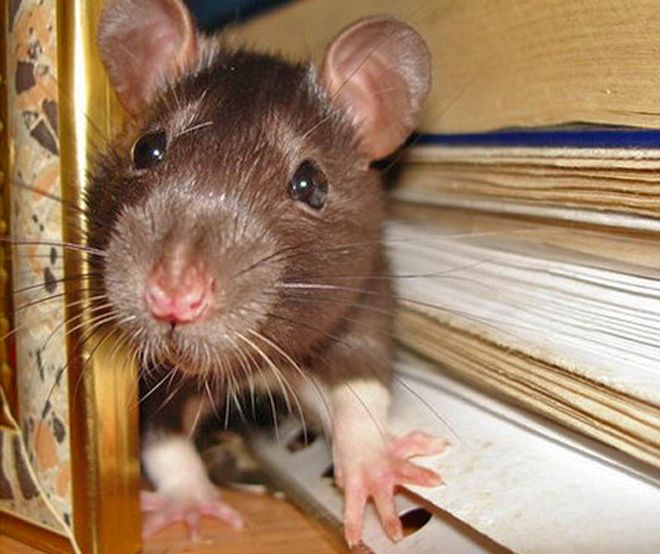

In 1996, the same researchers repeated the experiment with the addition of insulated foil vapor barriers and isocyanate insulation panels to the construction. The results of the previous experiment with a critical increase in thermal conductivity were reproduced, and the vapor barrier was destroyed by almost half [2].
Fig. # 2. Panel insulated with fiberglass insulation after the "mouse experiment" [2].
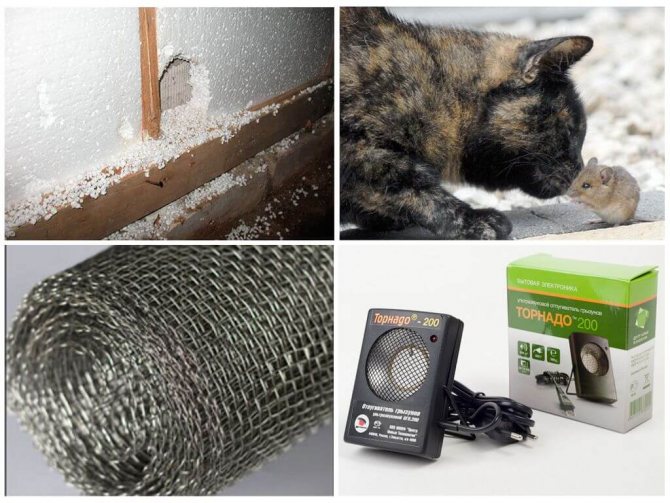

Other experiments with the effect of mice on insulation are also known. In 1982, in Germany, mice spoiled the following types of insulation: foam, EPS, perlite, mineral wool, glass wool, polyurethane, pressed shavings [3].
Rodent protection during construction
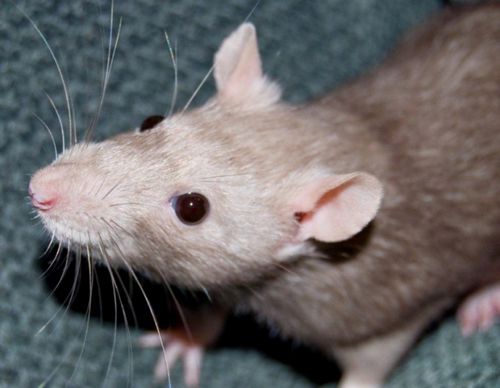

The best option is to take care of rodent protection even at the design stage of the house. So, sometimes building blocks are sprayed with a solution of borax or ordinary lime. It is advisable to install ecowool in the floor slabs on the lower floor. This material is 80% wood pulp and 20% borax. Such a composition acts as an antiseptic and prevents the appearance of pests.
Various components can be added to the insulation that scare away rodents. It can be dry grass with a pungent aroma - wormwood, mint, pine branches, burdock.Ash, slag, tobacco give the same effect.
How to protect a frame house from rodents
- Teplovata, used as insulation, carried out in the floor slabs of the lower floor, will protect against the appearance of mold, fungus, insects and rodents. The lukewarm wool, consisting of eighty percent recycled cellulose and twenty percent a mixture of boric acid and borax, is an excellent antiseptic for logs and repels insects and rodents.
- Borax or lime solution, with which you can trim the structure of the structure.
- The old method of rodent control, which our ancestors used from time immemorial: an addition to insulation ash, slag, tobacco dust, dry mint or wormwood.
- Mechanical safety: monolithic reinforced concrete slabs, laid in the base, will be a sure barrier for rodents. It is allowed to use the most inexpensive type: a fine-mesh iron network, filled in places where rodents are likely to penetrate.
We sheathe the frame house with a mouse net
One of the safest ways to keep your frame housing from rodents is to use a zinc-coated, small mesh alloy mesh.
It is allowed to run it along the rough floor or wrap the base with it. The level of the iron mesh, filled in front of the plinth trim, must be at least one meter. In addition, before insulation and finishing, it is allowed to knock off all corners of the housing with a fine-mesh net.
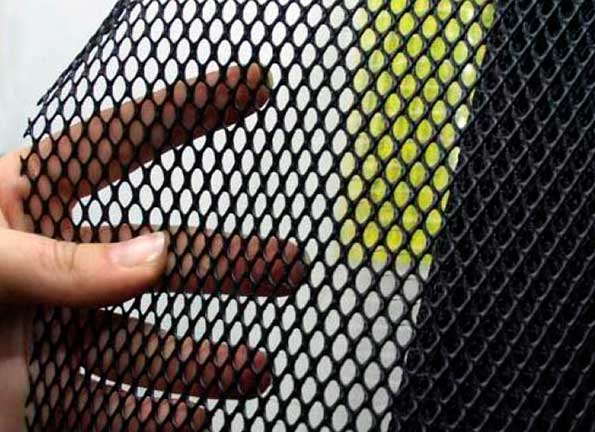

It is also allowed to protect a previously created frame house with a metal net. To do this, you should open it along the base of the house, at a depth of up to eighty centimeters (and if the holes of rodents already exist, then deeper than the dug passages). The grid is allowed to be dug at a distance from the dwelling, according to its perimeter, make a deep, narrow ditch and dust it with rubble. The base of the frame housing can be sheathed with a profiled sheet of structural steel of one and a half millimeters, which will serve as an obstacle on the road for rats and mice.
Floor protection
The floor, as the most likely place for rodent invasion, needs loyal protection. When installing it, it is allowed to operate both an iron mesh and a monolithic reinforced concrete slab.
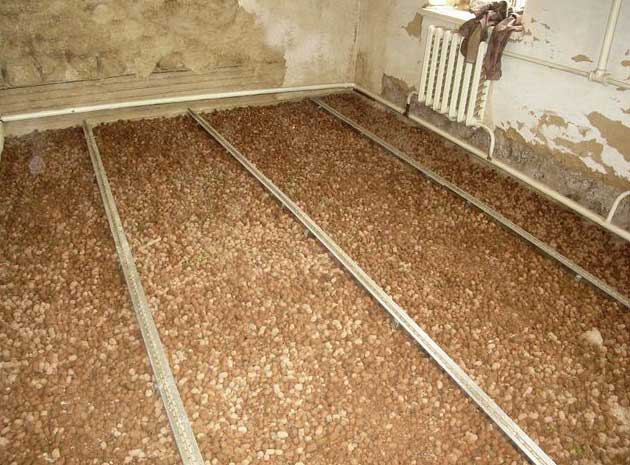

Also, an effective method of protecting the floor will be the use of a material such as expanded clay. When installing a rough floor, expanded clay, which personifies the material acquired from burnt clay, should be placed on the ground with a layer of at least thirty centimeters. On top, it is covered with a polyethylene shell, on which 2 layers of OSB-three slabs are placed. Then again a layer of expanded clay, and you acquire the structure of a rough floor, thoroughly protected from rodents. The effectiveness of the "expanded clay castle" is increased by oriented strand boards impregnated with boric acid and artificial wax - substances that repel rodents.
Heaters in the fight against rodents
When building frame houses, plastic can be used as a heater, which is an inexpensive material for thermal insulation. Nevertheless, the polystyrene itself, despite its own excellent characteristics, becomes a favorite nesting place for mice and rats. It is necessary to sacrifice the low cost of this system of material and use the most expensive type of insulation - lukewarm.
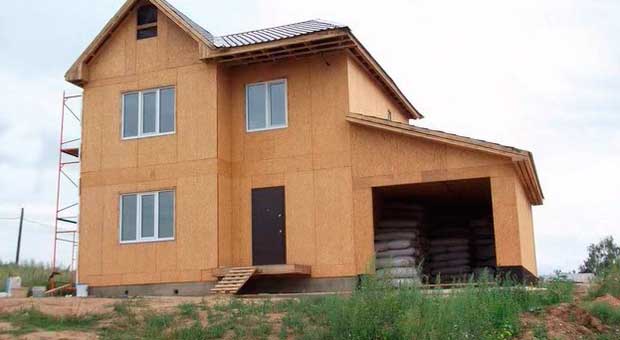

Undoubtedly, only specialists with the support of special equipment will be able to put the lukewarm in high quality, they will carefully lay all the thermal insulation work, blocking all possible cracks through which rodents can get through. This material will serve as a wonderful protection not only from rodents, but also from insects, fungus, mold, forming some kind of antiseptic environment, which eliminates the formation of absolutely all possible adverse conditions. In addition, the environmentally friendly material has excellent sound and heat insulation qualities.
The lukewarm wool contains wood pulp and borax in the personnel, which are absolutely not dangerous to human health. The insulation does not emit harmful toxins, which is very important for people prone to allergic reactions.
"Grandfather's" methods of protection against rodents
There are ways to protect against rats and mice, which our ancestors used safely. Rodents in all periods were unwanted visitors to a person's dwelling, as a result of this, he fought with them from small to large with improvised tools, which were effective, and almost all builders use them in the construction of frame structures.
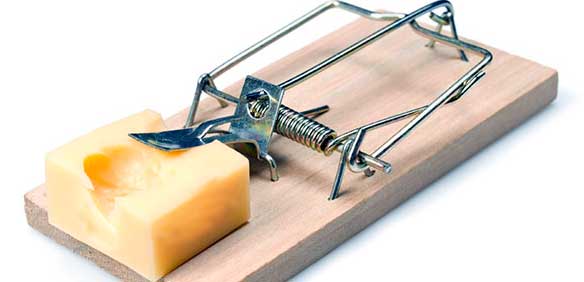

When building a house, it is allowed to add tobacco dust, slag, ash, pine branches or dry wormwood or mint to the insulation. These natural resources will always drive away rodents with their own scent. In addition, in a previously built dwelling, you can along the walls and pour red hot pepper behind them. Almost all builders in the course of housing construction cultivate structures with lime solutions.
Mechanical protection methods
If the frame house was previously built, and families of rodents settled in it at the same time with you, and you have neither the strength nor the desire to remove the spraying on the floor and walls again to protect or process them, then it is allowed to turn to classical methods of fighting mice, either rats. The conversation is about glue traps or mouse traps.
An exhausting battle with rodents with the support of mousetraps has the ability to last constantly, if they have previously multiplied in large numbers. At that time, pesticides may arrive for reinforcements, which must be used with the utmost care. There are a number of negative factors here. Firstly, a pet can get poisoned together with rodents, and secondly, a killed rodent has the ability to rot for a long time in an inaccessible area, carrying a heavy aroma through the dwelling.


Ultrasonic scarers
Quite productively, specialized generators that operate on the basis of ultrasound are waging a war with rodents. The introduced supersonic repeller forms an area of discomfort for rodents, without interfering in any way with a person's own work.
Biological weapons
We are talking about the most ancient enemy for rodents - a cat. When you are not allergic to the wool of these tame animals, the mere presence of a mustache-striped pet in your home will force the rodents to leave warm spots. However, not all cats have the ability to catch mice. Decorative breeds of animals will not be able to provide a suitable rebuff to arrogant newcomers. As a result of this, you need to take an ordinary servant aristocrat, which in a short time will deal with annoying rodents.
Remember that rodent invasions are easier to avoid than fight them later. As a consequence, think about security methods before moving on to a building.
Metal grid
The installation of a metal mesh is very effective, which will physically prevent rodents from entering the house. It is installed in places where mice are most likely to penetrate, for example, in the floor or walls. The mesh should have a small cell pitch - the most optimal - 5 by 5 millimeters. Small rodents have a very flexible body and can crawl through rather small holes - less than one centimeter in diameter. In addition, there are cases when rodents cut through a wire 1.5 mm thick.
Sometimes the mesh can be replaced with sheets of structural steel, the thickness of which is up to one and a half millimeters. When processing walls in this way, the mesh is set to a height of approximately one meter. Also, the mesh is laid along the foundation. The point is to lay such a grid at a depth deeper than mouse holes. This depth is up to 80 centimeters.The mesh or sheet metal can be laid not close to the foundation, but retreat a certain distance, and then fill it with rubble in the gap between the mesh and the foundation. Instead of a mesh, you can dig a trench around the perimeter of the house, which can be filled with coarse gravel.
Protection against penetration of mice and rats into the house.
What are mice and rats capable of?
Rats and mice can:
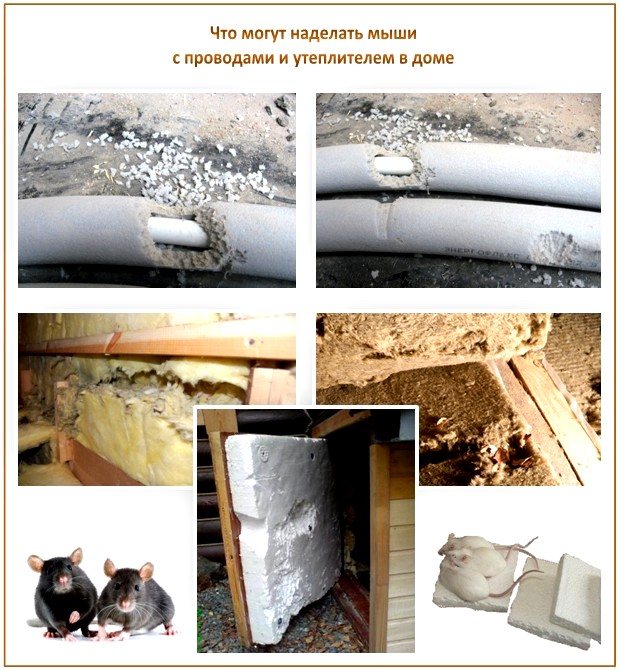

- Climb into the house along plants, trees, lianas, plants, electric wires, ropes. Climb to any height along vertical walls made of wood, brick, concrete, plastic. Crawl through pipelines, cable channels, ventilation pipes, underground communication inputs (through gaps Rats are capable of: crawling through slots of at least 1.3 cm, rising outside vertical pipes up to 7.6 cm in diameter, rising inside pipes or gaps of 3.8 to 10.2 cm in size, burrowing to a depth of 90 cm, swimming in water at a distance of 800 m, jump up or 33 cm in length. Mice are capable of: crawling through holes up to 6 mm in diameter, jumping to a height of 46 cm, surviving and multiplying at temperatures down to -4C.
Standard entry points for mice and rats into the house.
Water, gas, electricity lines entering the house, ventilation openings not protected by a grid, cracks in the walls, air vents in foundations, gaps when joining structures, ventilation gaps in roofing systems, sewer pipes, chimneys and chimney penetrations through walls and roofs, open entrance doors and windows, ventilation gaps of ventilated facades,
The best method to keep rodents at home is to create physical barriers to prevent rodents from entering the home and its structures. The added cost of designing and a mouse-repellent device is less expensive than repairing the damage done by mice.
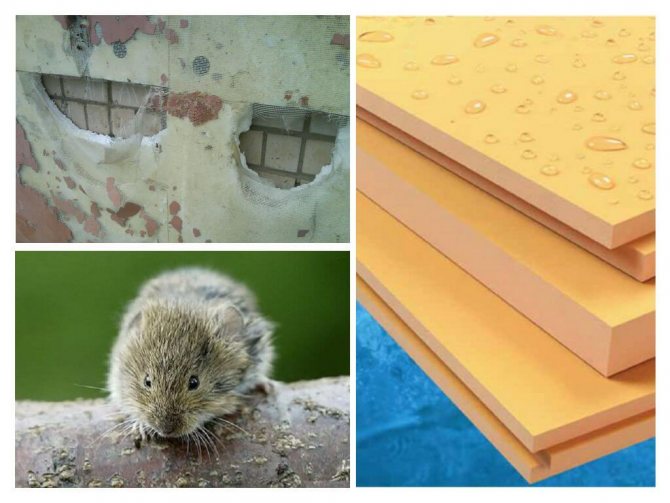

Fig. Number 3. Methods of mechanical protection of the house from the penetration of mice and rats.
To protect openings and ventilation gaps (in the roof, under the ventilation facades) from mice, a steel mesh with a mesh of less than 6 mm must be used.
For rat and mouse impermeable barriers, steel at least 0.56 mm thick can be used. The minimum thickness of masonry or unreinforced concrete wall capable of withstanding mice and rats is 9.5 cm. The minimum thickness of concrete reinforced with steel mesh is 5 cm.
To protect against digging and rat penetration, the foundation must be buried more than 90 cm into the ground, or equipped with an underground curtain with a depth of at least one meter made of galvanized steel mesh with a cell of no more than 6 mm. A monolithic reinforced concrete foundation in the form of a slab is the best way to protect a house from penetration of rodents through the ground, as well as reinforced concrete floors of the first floor. To protect against gnawing at the bottom edge of wooden doors, it can be protected by wrapping it in sheet metal at least 0.56 mm thick.
To protect against the rise of rodents along the walls, continuous circular outflows along the perimeter of the foundation can be used, protruding at least 36 cm from the foundation, or a continuous decorative strip of smooth metal along the perimeter of the house with a height of at least 35-45 cm [4].
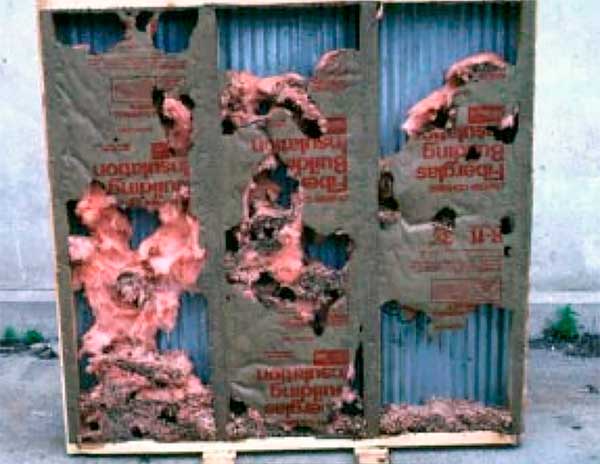

Bibliography:
S.E. Hygnstrom Impacts of house mouse activity of five types of insulation. Proceedings of the Fifteenth Vertebrate Pest Conference 1992 / University of Nebraska.
- Lincoln, 1992.S.E. Hygnstrom House Mouse Damage to Insulation. Nebraska Swine Reports / University of Nebraska. - Lincoln, 1996. M. Suss, B.
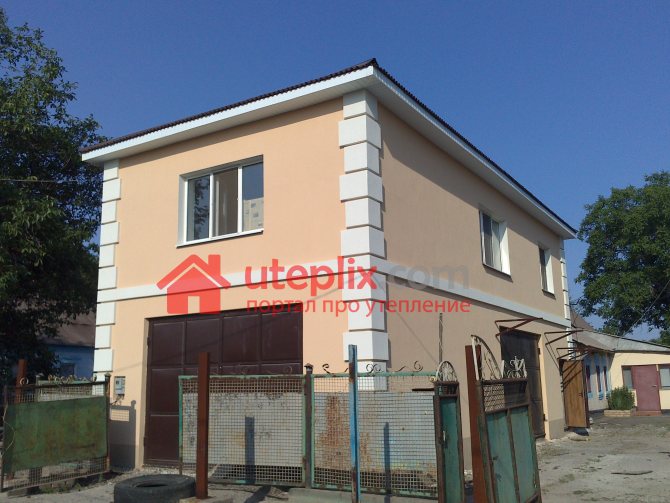

Mittrach. 1982. Mause zerstoren fast jeden Dammstoff / Landtechnik 37, - 1982.
P.81-83.R.O. Baker, G. R. Bodman, R. M. Timm Rodent-proof construction and exclusion methods. Prevention and control of wildlife damage / University of Nebraska. - Lincoln, 1994.
The right choice of insulation
Many people choose expanded polystyrene as insulation, since its cost is low and allows you to save money. But this is not the best option. Rodents will quickly gnaw through this material if they decide to climb into your home. If possible, it is better to combine expanded polystyrene with mineral wool, although this does not always solve the problem. Experts recommend using ecowool to insulate the structure. This is a material with a high degree of adhesion, it tightly fills even small gaps, although it is much more expensive. The use of ecowool will reduce the likelihood of rodents entering the house.In addition, the material does not generate dust, does not contain components hazardous to humans.
Important: ecowool is difficult to install, so it should be applied by a specialist who is familiar with the technology of such work. In case of errors in application, the material may lose its properties and shrink.
If mice start under the floor
The fact that mice have started up under the floor of a frame house can be easily recognized by the characteristic sounds. In this case, experts recommend making a so-called expanded clay castle. Expanded clay is a material that is obtained by firing low-melting clay. A layer of expanded clay about 30 centimeters thick is placed on the ground. This layer is covered with polyethylene and then covered with a double layer of OSB-3. Finally, the laminate is laid. Between the subfloor and the main floor, you also need to lay a layer of expanded clay 10 centimeters. This method is quite laborious, but it allows you to get away from the problem of damage to the floor by rodents.
Why is it necessary to protect wooden houses from rodents?
The answer is obvious: protection is required to prevent the undesirable consequences of living together in the same house with rodents, which cause a lot of problems, namely:
- Rats, mice are carriers of infectious diseases, and sometimes very dangerous.
- Over time, an unpleasant, pungent odor begins to be felt in the room. In this case, no amount of deodorants and fresheners will help.
- Thermal protection deteriorates. The first thing that rodents begin to eat is the insulation of the house. Additional costs are required for heating, heat exchange is disrupted.
- "Guests" damage building materials, pipes, eat wire insulation, which can lead to a short circuit and fire in the building.
- Sleep is disturbed. Animal movements are especially audible at night. Lack of sleep appears, which develops over time into more serious disorders of the nervous system.
In addition, the rat can die under the floor or in another hard-to-reach place. The consequences of this are dire. Anyone who has already faced such problems becomes an active supporter of mandatory rodent protection.
Ultrasonic generators
What if the house has already been erected, and despite all the preventive measures, it was attacked by rodents? There are many proven ways to eliminate mice, among which a very effective and environmentally friendly one is the use of ultrasonic scarers. These are devices whose principle of operation is to emit sound waves that are not audible to the human ear. In this case, rodents clearly hear an unpleasant sound, which forces them to leave the area of influence of the device. Such devices are effective not only against mice - the installation of an ultrasonic repeller can also rid the area of larger rodents - rats, moles and other pests.
The presence of a cat in the house, and preferably several, can prevent the appearance of small pests. Everyone knows with what pleasure cats-hunters exterminate rodents. Indeed, even the smell of a predator scares away rodents. But this does not always work. You may come across a cat that will live in the same territory with mice in complete harmony, without causing them any harm. Natural enemies of small rodents are weasels, stoats. Several of these domesticated animals are able to quickly clear the house of mice.
Let's summarize
You can get rid of the mice, I've managed to get them out of my house from the timber. There are many ways, and many of them are very effective. But all methods are fraught with unnecessary problems and discomfort, and therefore I advise you not to repeat my mistake and take into account the factor of the arrival of rodents even at the construction stage.
I hope my short article was clear and useful to you. If you have something to say (for example, share your way of breeding mice), then be sure to write about it in the comments!
Mousetrap
This method of eliminating rodents has been known from time immemorial.A mousetrap is such a simple device that works when the animal pulls on the bait. Mice are not selective in their food, but cracklings or a piece of raw or fried bacon, cut off with the skin, are best suited as bait. Mousetraps are placed on a flat, hard surface where pests are most common. If you choose the right bait, then you can quite effectively eliminate all the mice living in the house. In addition, the method is quite environmentally friendly and cannot harm humans.
Rodent traps can be made by yourself. So, for this purpose, glass bottles are used, for example, from beer. It is necessary to pour a little fragrant unrefined sunflower oil into the bottle, and set the bottle itself at an angle of about forty degrees, securing it with a rope. As practice shows, mice often fall into such a trap and up to five animals can be in the bottle per night.
Another option for a trap is with a bucket and two planks. In a regular bucket, you need to pour water up to half. A plank is placed on the bucket, along which the mouse can climb up. Two more slats are installed on top, one is placed on the bucket itself, and the second is cross with the first, it should be somewhat shorter. You need to put bait on the edge of the short bar. The meaning of this design is that when the mouse gets close to the treat, the bar tilts under its weight and the animal falls into the bucket. Then the bar returns to its original position. This method is quite effective, but it is designed for enthusiasts, as it is necessary to carefully choose the length of the short board, and make it so that it returns to its place.
Chemical substances
Poison is the most effective way to control small rodents, insects and other pests in your home and garden. The method is not entirely humane, but it allows you to solve the problem very quickly. Such funds are available in a variety of forms. It can be hard briquettes, dough briquettes, poisoned grain, granules, which retain their toxic properties for a long time. In addition, the cost of the drugs offered on the market is very different, which allows you to choose the most suitable remedy.
The poison, entering the rodent's body along with the bait, causes the death of the animal, even if the amount of the substance was very small. This method requires caution, since when working with toxic substances there is a risk of poisoning yourself. Therefore, it is necessary to work with the poison with gloves and, preferably, in old unnecessary clothes, which can then be simply thrown away. The poison should be located in places that are difficult to reach for the inhabitants of the house, so that none of the household members can get poisoned. Pets should also be carefully guarded. Before starting work, carefully read the attached instructions, the description of the tool, evaluate your capabilities.
There is one point that can cause trouble for the residents of the house. If a mouse that has eaten the poison, before dying, crawls into a hard-to-reach place. In this case, it will rot, exuding an unpleasant odor for a long time. You will have to look for the source of the smell, open the floor or dismantle the walls.
Fact: modern producers of the poison offer such a product, after which the animal begins to suffocate and tries to leave the room. This, in some cases, helps prevent odors.
Other methods
The struggle of man with rodents has been going on for many centuries. People are constantly coming up with new ways to protect the house and property from damage by pests. So, burnt wooden blocks and branches are laid under the flooring. The smell of burnt wood scares off mice. In addition, you can use other aromatic repellents - pine, mint, tobacco, added to the insulation.Red hot pepper is poured around the perimeter of the house and, if possible, into the walls. It is also known that rodents do not tolerate the smell of burnt wool. The old method is to put a piece of wool in an old unnecessary saucepan, make a few holes in the saucepan and set the wool on fire, then put this container in the basement. The smoke smell will slowly spread throughout your home, chasing the pests away.
A source

